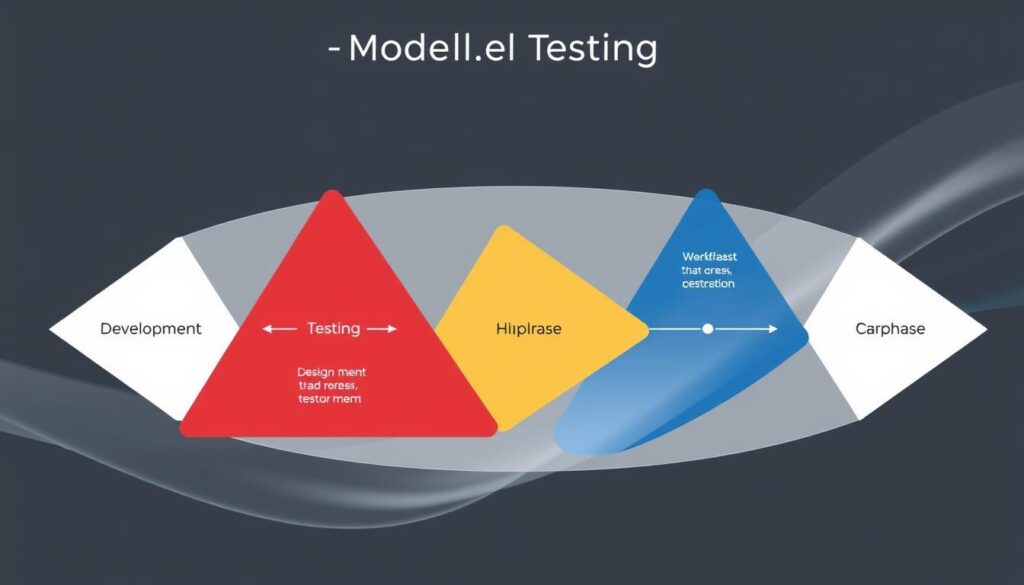In today’s fast-moving tech world, software is key to innovation. Software testing and quality assurance are more important than ever. Quality assurance services shape how reliable and successful software applications can be across sectors. ScienceSoft uses its deep knowledge to make sure software products meet specs and delight users. Its quality assurance services focus on making software reliable, the core of its custom solutions.
ScienceSoft’s teams use detailed testing strategies and industry knowledge to make superior software products. They keep their team dynamic stable, even in long projects. This approach ensures continuous, detailed software reliability checks. Their commitment to quality, driven by top-notch quality management and strong information security, makes ScienceSoft a leader in QA and Software Testing.
Key Takeaways
- Core aspects of software testing include various methods such as unit, system, and integration testing, crucial for ensuring the highest quality of software.
- A blend of automation tools and manual efforts in testing can significantly enhance the software’s user experience and detect potential defects early.
- Software testing proves to be cost-effective by identifying bugs early on, thus curtailing development and future maintenance expenditures.
- Quality assurance goes beyond defect detection; it focuses on setting quality standards from the design phase to final product delivery, increasing overall customer satisfaction.
- The adoption of automated testing in quality assurance is pivotal for validating software functionality efficiently and effectively.
- Professional expertise in software testing and quality assurance encompasses a meticulous attention to detail, analytical capabilities, and robust communication skills.
- Imbued with historic lessons, the fields of QA, QC, and testing diligently work together to avoid costly errors and deliver outstanding digital products and services.
Understanding Software Testing and Quality Assurance
Software development is always changing. This means we need strong quality control. Quality control keeps products reliable and efficient. Understanding software testing and quality assurance shows their key role in today’s tech market.
Definition of Software Testing
Software testing is a core part of making software. It’s all about finding bugs using different methods. The goal is to make sure software works right and meets needs. It’s important for quality control. About 85% of bugs are found this way. This stops losses that could take away 5-10% of revenue.
Definition of Quality Assurance
Quality assurance is more than finding bugs. It’s about making software better with planned actions and prevention. This approach stops legal issues—about 95% of them—and cuts costs by up to 20%. It makes everyone involved happier by about 15-20%.
Importance in Software Development
Combining software testing and quality assurance is crucial. Together, they reduce risks by 20-30% compared to testing alone. They make sure the software works well and performs right. This saves time and money, up to 30% in savings over time. And it cuts down on work needed by 1.5 times.
In short, software testing and quality assurance are essential. They ensure products are up to par and offer a great user experience. Everyone who makes software depends on these steps. They help make products efficiently and of high quality, fitting today’s market needs.
Types of Software Testing
Software testing is essential for creating high-quality applications. Various testing types help ensure different aspects of software quality. Each one serves a unique purpose but together, they improve the software’s effectiveness and safety. With new methods developing, software testing services are now more crucial. They have evolved with automated testing tools and test automation strategies.
Manual Testing
Manual testing is when testers check software by hand. They do this to find defects without automation scripts. It’s slower and depends on the tester’s skills. However, it gives direct feedback and works well when automation doesn’t fit.
Automated Testing
Automated testing, however, uses tools for predefined tasks. It makes testing more efficient and reliable for repeated tests. Automated testing tools quickly go through large parts of the software. They ensure everything works right, even with many code changes.
Performance Testing
Performance testing checks if software works correctly under heavy use. It’s key for apps expecting many users at once. This testing type keeps the app stable and fast, vital for user happiness and business success.
Security Testing
Today, security is more important than ever because of the high risk of data breaches and cyber threats. Security testing finds weak spots that could leak sensitive information. It protects user data and strengthens the app against attacks.

By using a variety of testing types and keeping up with test automation progress, software testing services boost product trust and user approval. As technology changes, testing tools and methods must also update. Staying current with automated solutions and testing approaches is crucial for businesses.
| Testing Type | Brief Description | Key Advantage |
|---|---|---|
| Manual Testing | Testers manually check software for defects. | High level of accuracy in UI elements. |
| Automated Testing | Uses tools to run tests automatically. | Efficiency and consistency in results. |
| Performance Testing | Assesses the software’s performance under load. | Ensures reliability during high usage. |
| Security Testing | Identifies potential vulnerabilities. | Protects against data breaches. |
The Role of Quality Assurance in Software Development
Quality assurance in software development is crucial. It does more than find problems. It improves product quality to meet industry standards during development. Software quality assurance best practices shape this process. They lead to better operations.
Ensuring Product Quality
Software Quality Assurance (SQA) is vital for software quality. It follows standards by groups like IEEE and ISO. This makes sure every development phase meets quality goals. SQA involves planning, testing, and managing defects. This approach ensures top-quality software.
Reducing Development Costs
Quality assurance helps avoid expensive fixes after launch. Catching issues early saves money. It avoids the high cost of post-launch corrections. SQA also saves money by managing resources well and making development smoother.
Enhancing Customer Satisfaction
Focusing on quality assurance improves customer happiness. It makes software reliable and meets customer needs. This builds a good reputation, customer loyalty, and can lead to more market share.
Software quality assurance is essential today. It plays a key role in making great products, saving money, and keeping customers happy. It’s a must for any software development project.
Software Testing Methodologies
In the world of software development, a software testing methodology is key for quality. These methods are the core of any QA testing framework. We’ll look at three main ones: Agile Testing, Waterfall Testing, and V-Model Testing.
Agile Testing
Agile Testing, part of Agile development, adapts and tests throughout the entire process. It’s known for being flexible and quickly responding to changes. This approach promotes testing in small pieces. Testers and developers work together. This ensures fast feedback and quick fixes, improving product quality in competitive markets.
Waterfall Testing
Waterfall Testing takes a straight, step-by-step approach, different from Agile. Testing starts only after each development phase ends. This method requires detailed documentation and sticking to the original project plan. It works best for projects with few changes and clear starting requirements. Waterfall’s structured steps allow for careful review of each part before moving on. This helps avoid extra work.
V-Model Testing
V-Model Testing is like Waterfall but includes a testing phase for every development step. It pairs development and testing together. By focusing on planning and early error detection, it avoids costly later mistakes. This model is great for ensuring all requirements are checked before advancing.

Each software testing methodology offers a way to ensure software is both functional and high quality. Choosing the right method is crucial for the testing process’s success and efficiency. It matters whether you’re introducing new software solutions or improving what you have.
Tools for Software Testing and Quality Assurance
In today’s fast-changing tech world, choosing the right tools is key to better software testing and quality assurance. Businesses depend more on tech, so automated testing tools and frameworks are critical. They make processes smoother and help with growth, flexibility, and deep quality checks.
Popular Testing Tools
Many companies seek top testing tools for superior software quality. Selenium shines as a top choice for web automation testing with high ratings from G2 and Capterra. It works well across different browsers and languages. Postman, known for its ease of use in API testing, also scores high in reviews. It’s great for automated test verification.
Automation Frameworks
Cucumber is famous for plain language test scripting, with great ratings from G2 and Capterra. It makes working together easier, ensuring software meets goals. Playwright and TestRail stand out for browser automation and managing test loads. They’re part of a wide selection of frameworks designed for various needs, improving test management and execution.
Continuous Integration Tools
Continuous integration tools bring automated tests into the development cycle. This leads to quick issue fixes, enhancing productivity and reducing launch times. Jenkins, a top automation server, and GitHub Actions are key for testing, building, and deploying apps. They ensure comprehensive testing fits smoothly into development.
Choosing the right software testing and quality assurance tools is crucial for top-notch software quality and success. These tools help companies navigate complex software development, delivering strong, reliable, and user-focused products.
Best Practices in Software Testing
For companies aiming to improve, following software quality assurance best practices is crucial. These practices refine development processes and boost product quality. By adopting strategic testing methods, companies can produce reliable software. This software will meet user hopes and standards.
Creating Effective Test Plans
A detailed test plan is key for software testing and quality assurance. It outlines the test scope, methods, resources, and timetable. Surveys show that 33% of testing is done by non-dedicated testers. This fact underlines the importance of clear roles.
Regular Test Reviews
Reviewing test cases often keeps them useful as project needs change. Risk-based testing pinpoints areas with likely defects. It’s becoming essential. QA metrics also matter. They help teams improve their testing work.
Implementing Test Automation
Automation is vital in software quality assurance best practices. It can’t do all testing work but helps a lot with regression and smoke tests. Tools like PractiTest make testing more efficient by organizing test data.
Mixing detailed test plans, regular check-ups, and keen automation boosts testing frameworks. It improves efficiency, software quality, and customer happiness. Doing this well means staying up-to-date with tech and trends.
The Future of Software Testing
The landscape of software testing is changing rapidly. Trends like AI and new testing tools are shaping its future. These changes are fueled by the need for better ways to deal with complex software and the demand for quicker, more efficient tests.
Trends in Testing Practices
Test automation is becoming more popular lately, and it seems this growth will continue. Automated tools reduce testing time and effort, increase accuracy, and enable continuous testing. This shift enhances manual testing with AI, making test automation smarter.
Impact of AI on Testing
AI is transforming software testing by adding advanced analytics and machine learning. AI-based tools can predict errors, understand complex data, and offer insights. This is crucial as software becomes more complex and connected.
Evolving Testing Tools
Software testing tools are also improving. New tools are faster, more robust, and easier to use. This means more people can do complex tests. The accessibility of AI-based testing tools is expanding their use across industries.
These tools are increasingly working with other software development systems. This integration smooths workflows and boosts collaboration. It supports the agile methods used in modern software development.
Looking ahead, emerging technologies, like quantum computing, could revolutionize testing. Quantum computing promises incredible speeds and accuracy for simulations and problem-solving.
There’s also a growing demand for software that’s secure, user-friendly, and high-performing. Advanced testing frameworks are essential to meet these needs. The progress in testing practices and tools, along with AI, are vital for the future of software testing.
Choosing the Right Software Testing Services
The world of software development is always changing. This means the importance of quality assurance (QA) is big. It helps make products that meet and beat what users expect. When looking for the best software testing services, you need to think about many key points. This makes sure your software is strong, safe, and top-notch. You should look closely at different testing methods, like unit and acceptance testing. Each is key to finding different issues during the making of the software.
Factors to Consider
It’s important to pick a QA partner who has a solid QA testing plan. They need skills in planning tests, analyzing risks, and designing test cases. Being good at tracking defects and offering test advice is also crucial. The right provider is skilled not only in automating tests but also in performance, security, and user testing. For example, Abstracta is a top QA company. They offer services in all these important testing areas. This gives a full approach to making sure software is of great quality.
Evaluating Service Providers
Looking at software testing services means more than just seeing their service list. You must understand their experience in the industry and their use of the latest tools. For instance, how they work with platforms like Datadog is important. It helps with watching over infrastructure and analyzing it, which keeps quality high. Also, see how the QA company focuses on security, uses AI, and their history of delivering good work. This helps you know what quality you can expect from your projects.
Building Long-term Partnerships
Thinking about a long-term QA partnership is a smart business choice. Going with a stable and growing provider, like ScienceSoft, promises continuous quality. Choosing a QA partner should be based on a shared aim for quality. Working together closely and communicating well is key. In the long run, this keeps the software good and meets the business’s needs as they change.
FAQ
What is Software Testing?
Software testing checks a software app to find bugs, errors, or defects. It makes sure the software works well and meets requirements.
What is Quality Assurance in Software Development?
Quality assurance in software development means making sure a product meets specified requirements. It helps avoid mistakes and defects in products and services.
Why are Software Testing and Quality Assurance important?
These processes are key to ensuring software works right and offers a good experience. They keep software competitive and in line with standards.
What is the difference between Manual and Automated Testing?
Manual testing is done by people executing tests without tools. Automated testing uses tools and scripts to test more efficiently.
How does Performance Testing benefit a software application?
Performance testing checks how fast and stable a software is under workload. It’s key for a good user experience in high-traffic situations.
What is the role of Security Testing in software development?
Security testing finds flaws in a system’s security. It’s vital for protecting data and keeping the system working as expected.
How does Quality Assurance help in reducing development costs?
By finding issues early, quality assurance saves money. Fixing problems later on or after release can be much more expensive.
What is Agile Testing and how does it differ from Waterfall Testing?
Agile testing integrates testing with development. It’s ongoing and iterative. Waterfall testing happens in phases, only after all development is done.
Why are Popular Testing Tools important in QA?
They streamline and enhance the testing process, saving time and improving software reliability and quality.
What are Automation Frameworks and how do they assist in Test Automation?
Automation frameworks set the groundwork for efficient automated testing. They guide developing, executing, and maintaining test scripts.
How does Continuous Integration affect Software Quality Assurance?
Continuous integration boosts software quality by allowing quick testing of code changes. This leads to faster defect detection and fixes.
Why is creating an Effective Test Plan essential in Software Testing?
An effective test plan guides testing towards project goals. It outlines the strategy, scope, and schedule, aligning activities with requirements.
What is the significance of Regular Test Reviews?
Regular reviews keep test cases current and effective. They adapt to project changes, maintaining testing relevance and integrity.
How will AI impact the future of Software Testing?
AI will revolutionize software testing with more automation and smart analysis. It’ll make tests more efficient and uncover complex issues.
What factors should be considered when choosing Software Testing Services?
Look at the provider’s experience, team quality, and methodologies. Their record in security and delivery is also key.
How do you evaluate a Software Testing Service Provider?
Check their certifications, portfolio, client feedback, and approach to security. Their adaptability and innovation are important, too.
Why are Long-term Partnerships essential in software testing?
Long-term partnerships provide deep product and goal understanding. They ensure consistent quality and better software-business alignment.



